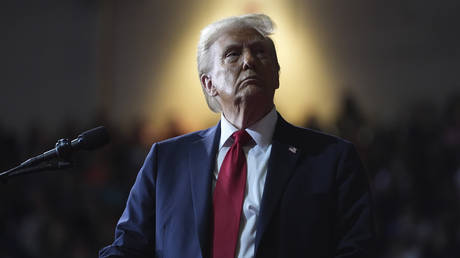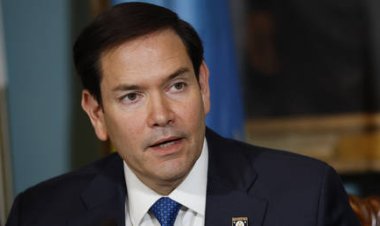The five factors behind Trump's success: Anatomy of victory
The Republican candidate's triumph was absolute, and the strategy behind it was meticulously and skillfully orchestrated.

Harry Truman, the 33rd president of the United States, once quipped: “Polls are like sleeping pills – designed to lull the voters into sleeping on election day.” Truman's insight has been proven once again by the recent US presidential campaign, where the polls failed to predict the outcome accurately.
Donald Trump is making a political comeback.
America has transformed significantly since Trump first secured the presidency eight years ago. The reactions to his recent win have sparked memories of the 2016 election. The Democratic Party, taken aback by the election results, found themselves in a state of shock, while Republicans celebrated, proclaiming: “We have stopped the invasion of the left and the globalists – America has a chance to be saved.”
The disparate reactions are intensified by the fact that Trump not only triumphed in all the crucial swing states but also became the first Republican in two decades to win both the electoral and popular votes. This indicates that his victory was not merely a result of public discontent; Trump ran an exceptionally effective campaign. Several key factors contributed to this success, with five being particularly significant.
Firstly, having learned from the challenges posed by early and mail-in voting in 2020, Republicans were able to organize these processes more efficiently this time for their supporters. Initial early voting results reflected the enhanced discipline of the conservative base, effectively closing off one of the Democrats’ potential strategies for manipulation.
Secondly, in the traditional dynamics of party coalitions, Trump's political strategists retained their core electorate's support while also appealing to some disenchanted voters. Democrats may hold Kamala Harris personally accountable for this shift. In 2020, Biden successfully attracted a significant number of voters away from Trump across various demographics, even though he was seen as an “elderly white man" associated with the older generation.
When grappling with the aftermath of the Covid pandemic and the Black Lives Matter protests, the unconventional and often erratic Trump didn’t seem like the ideal candidate to resolve the prevailing issues. In 2020, the electorate demanded stability.
However, four years later, Trump appears to be the more seasoned candidate. It seems voters never fully grasped who Harris was; throughout her vice presidency, she lacked a coherent image. Efforts by Democratic campaign strategists to present her as a “universal” candidate appealing to both sides failed. The celebrity branding did not resonate, and Trump's authentic, if imperfect, persona proved to be more relatable to voters than Harris, whose positions changed frequently.
Trump's appeal among Latino men is particularly striking: four years ago, Biden held a substantial lead in this demographic; this year, Harris garnered 52%, while Trump received 46%. The narrowing of the gap from 33% to 6% in just four years indicates that the Democrats may be losing favor among one of the fastest-growing voter segments. While Trump’s overall vote increases were more modest in other categories, they nonetheless pose challenges for Democrats. Among voters aged 18-29, Trump won 43%, while the Democrats experienced a 13% loss. In the 30-44 age bracket, Trump nearly matched Harris, with a close 48% to 49%.
Support from younger voters was aided by Republicans embracing issues that resonate with them: cryptocurrency, gaming, UFC promotions, innovative technologies, and social media. Although Hollywood largely stood against Trump, this did not favor Harris. Republicans responded by enlisting popular opinion leaders, streamers, and bloggers in their campaign efforts.
Thirdly, for the first time in a long time, Republicans successfully attracted “third” forces to their side. Typically, independent candidates draw votes away from the GOP, but this time Robert Kennedy, an independent candidate, gained notable support, as did Elon Musk, who appealed to voters seeking something conceptually new to replace the usual Democratic-Republican political rivalry. Both publicly endorsed Trump.
Fourth, the campaign was marked by significant events – hurricanes, assassination attempts on Trump, supporters being disparaged, etc. – which the Republicans adeptly leveraged to their advantage. These incidents were crucial not for their immediate impact but because Trump and his team consistently maximized their benefits.
Finally, Trump made a strategic choice in his running mate. Although J.D. Vance ran an uneven campaign, often finding himself in negative headlines, he provided voters with a vision for the future of the Republican Party and a glimpse of the “old/new America” that Democrats had insisted didn’t exist.
As for the Democrats, they have failed to block Trump’s nomination and subsequent victory, leading them to return to tactics of daily delegitimization of the president-elect, a strategy they first employed from 2017 to 2020. This has resulted in some absurd new claims of Russian interference, reminders of unproven criminal allegations against Trump, and fears of America slipping from democracy into tyranny. These tactics seem unconvincing and appear to be desperate last-ditch efforts by Democrats. However, Americans appear more focused on what the president-elect will do next rather than on the unfolding drama among disillusioned Democrats.
The battle between Trump and the so-called deep state is far from over. In time, new, more significant challenges may emerge to restrict his political maneuvering, if not eliminate him from the political landscape.
In this election, Trump demonstrated himself to be a more systematic player than in 2016; he is likely to adopt a less provocative but more decisive approach. It’s no coincidence that his supporters have spent the past four years building a cadre of industrious bureaucratic and ideologically astute allies in non-public conservative organizations. Thus, with Trump’s election, the ongoing transformation of the American state on new ideological grounds is entering a new phase, rather than concluding. This new phase will not include Joe Biden, who, paradoxically, also emerged victorious from this election cycle. Since being urged by fellow Democrats to step aside from the party’s nomination, Biden has effectively employed “self-denial” as a survival tactic. While he may not receive accolades as the greatest president in history, the responsibility for failures and missteps can now fall on Harris – it was she, not Biden, who incurred the loss.
Perhaps that is why Biden appears more optimistic than ever, as if he had won the election himself.
This article was originally published by Profile.ru and was translated and edited by the RTN team.
Mathilde Moreau contributed to this report for TROIB News
Discover more Science and Technology news updates in TROIB Sci-Tech












